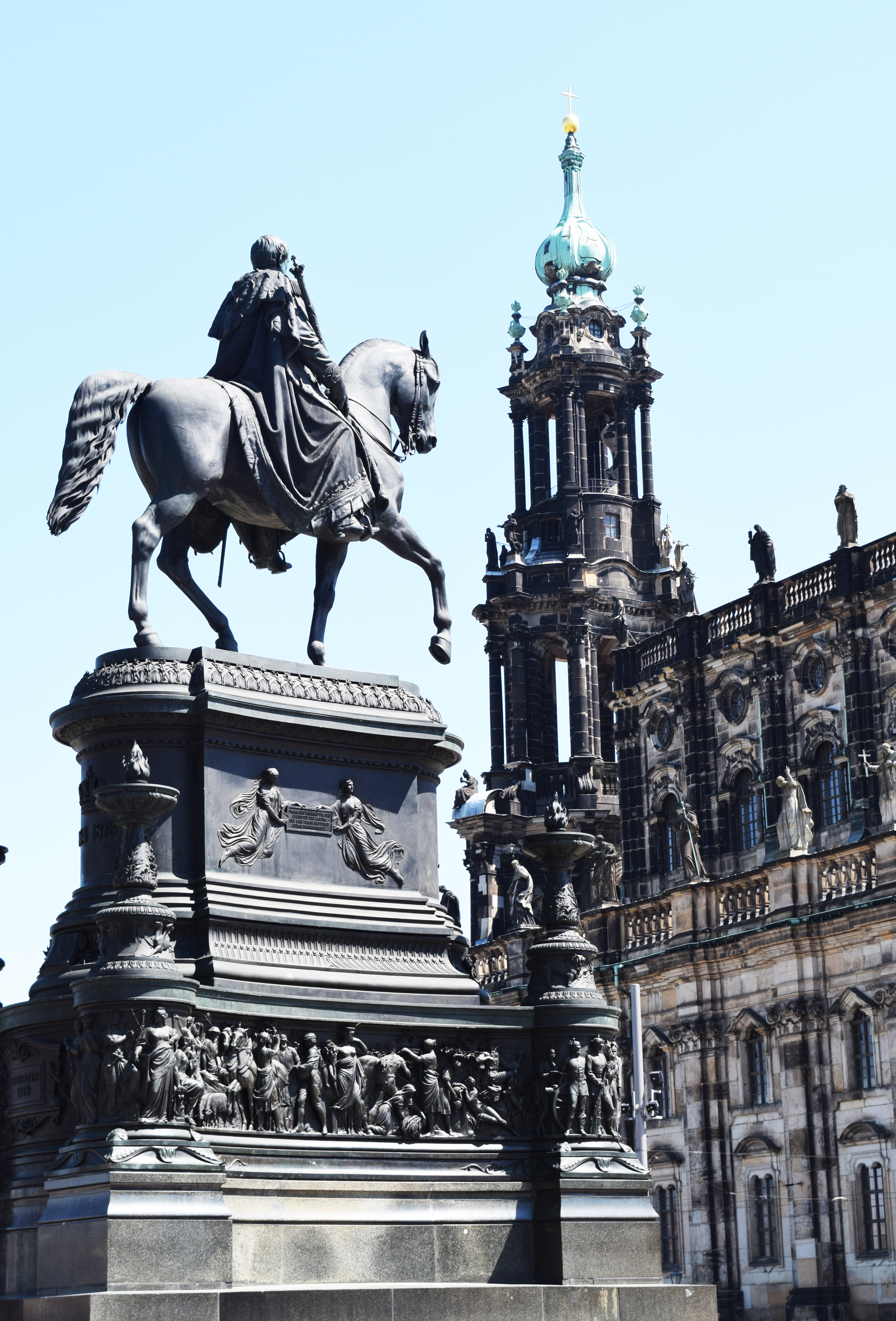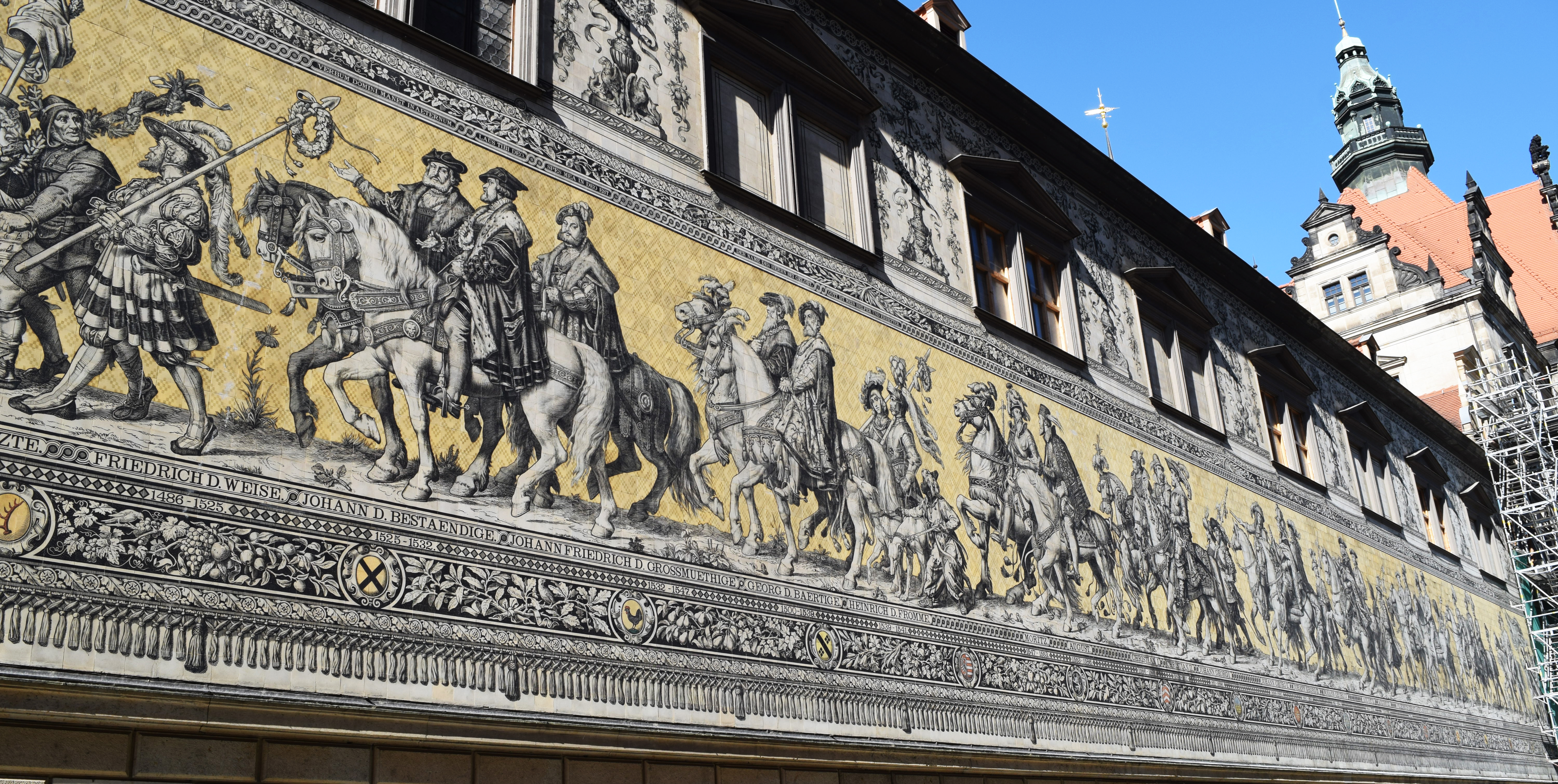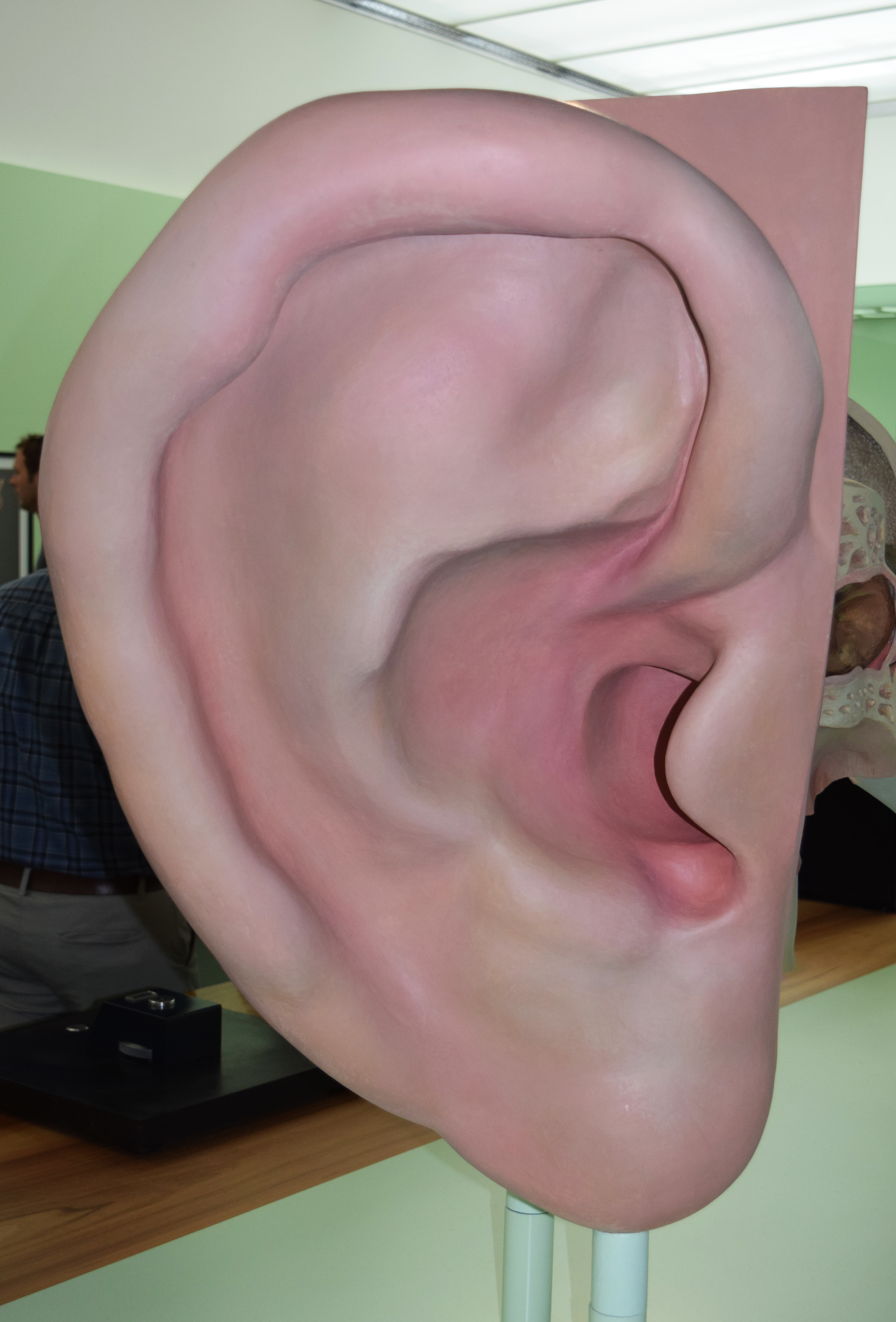DRESDEN, GERMANY — The late-day sun sits high in the sky over handsome Neumarkt Square, casting the iconic Frauenkirche (the Church of Our Lady) in an angelic light. The gigantic domed structure with the checkerboard sandstone exterior looks like a giant sandcastle.
Cafés ringing the Old Town square are filled to capacity with beer drinkers and sun worshipers. The air is scented with the smell of bratwurst and schnitzel cooking on grills at a neighbouring market. Laughter is everywhere.
Amidst such a festive setting, it’s hard for anyone to imagine that this square was Ground Zero for one of the most horrific acts against humanity — the senseless fire bombing of Dresden by Allied forces in the waning days of World War II.
It was a well documented act of revenge. (Nazi bombers had mercilessly destroyed much of England’s Coventry in the early part of WWII and Winston Churchill, knowing Adolf Hitler’s regime was near collapse, ordered Dresden levelled). It was a decision that many today mighty argue was a war crime.


Above: Church of Our Lady was rebuilt brick by brick, as was the city's handsome squares.
In four raids over three days (Feb. 13-15, 1945) more than 1,200 British and American bombers dropped 3,900 tons of incendiary devices on Dresden, causing a huge firestorm that engulfed 80 per cent of the buildings in this state (Saxony) capital and the deaths of almost 30,000 people.
This was Europe’s Hiroshima.
The only thing left standing in the Old Town after the raids was the Church of Our Lady, where many people had hid during the bombing. However, two days later, thanks to its main sandstone columns being weakened from the heat of the surrounding fires and the weight of its massive dome, the church collapsed in on itself — the last act of lunacy against this historic city.
The rubble that was once the Frauenkirche remained through Dresden’s Communist era — the city was part of East Germany after WWII — but when Germany was reunified in 1991, plans were quickly set in motion to rebuild the treasured church. Donations (over $160 million Cdn) came pouring in from around the world and in 1994 the rebuild began. The original plans were found and followed religiously and the $250 million project was finally completed in 2005.
The Church of Our Lady now stands as a monument to the people killed during the bombing and a testament to the resilience of the residents of this beautiful Baroque city on the shores of the Elbe River.
Many of the original 11th-century sandstone blocks — 9,286 to be exact — that had been blackened by time and the elements, not the bombings, were interspersed with new blocks during the reconstruction, thus giving the exterior its unique checkered appearance.

Above: The Procession of the Princes is a massive mural that actually survived the Allied bombings.
The church’s 96-metre-high dome — second in height only to the Vatican’s St.Peter’s — is crowned with a gold cross made in England by a craftsman whose father participated in the bombing of Dresden. In an act of reconciliation, when the cross was raised in place, the craftsman along with dignitaries from Coventry, were invited to participate in the moving ceremony and on Oct. 29, 2005, Dresden’s Church of Our Lady rose from the ashes of war to once again take its rightful place as the symbol of this remarkable city.
As impressive as its exterior is, though, the Frauenkirche’s unique multi-tier circular interior, lavishly decorated in pastel shades with ornate gold trim, is what really leaves visitors awestruck.
Surrounding the great church are many regal buildings, leftovers from Dresden’s Holy Roman Empire days when Augustus II ruled much of Europe from here.
Nicknamed “Augustus the Strong” because he could break horseshoes with his bare hands and, according to legend, fathered 370 children — he actually only had nine — the ruler amassed a treasure trove of riches during his reign, much of which is now displayed in a wonderful museum called the Zwinger — the old Royal Palace.
Among the priceless objects in the collection is the 41-carat Dresden Green Diamond, perfectly preserved silk garments worn by rulers over the centuries, rare Ottoman tents, armour from that period and some fascinating art, like a frigate made of ivory so thin it’s transparent.
When the Soviet Army arrived in Dresden in 1945 and put the city under communist rule, most of the Zwinger’s treasures were moved to Moscow and only returned in the late 1950s.
A beautiful promenade nicknamed “the sidewalk of Europe,” runs along the Elbe and supplies visitors with spectacular views of the slow moving river and Old Town skyline. One thing you quickly notice while walking the promenade is that many of the old blackened structures are topped with golden ornaments. The City Hall tower, for instance, features a golden statue of Hercules. His outstretched arm, however, caused a problem for the Russians.

Above: The former Royal Palace is one of the most impressive of its kind in Europe.
“When they (Russians) first arrived they wanted to pull Hercules off the tower because they thought his outstretched arm was the Nazi salute,” a guide name Christine informs me. “However, they relented when citizens convinced them the statue dated back to the late 19th century and had nothing to do with Hitler.”
The Elbe is usually filled with lots of steam engine paddle boats that take visitors on lunch and dinner cruises down the mighty river that’s lined with lots of stately castle homes and terraced vineyards. While one of the smallest wine growing regions is Germany, Saxony is a big producer and the quality of wine here, especially the whites, is second to none.
Oddly enough, the people of Dresden are big fans of Dixieland music and hold one of the world’s biggest Dixieland festivals each year.
The Contemporary Art Museum and the Art Academy, topped with a dome nicknamed the “Lemon Squeezer” because of its serrated shape, are just as impressive as the Zwinger.
Off Peter Square, where the State Opera House is located, Christine draws my attention to a massive mural running along the Royal Palace wall and identifies it as the “Procession of the Princes.”
“It’s made of 24,000 Meissen tiles (the famed ceramic city is an hour’s drive outside Dresden) and actually survived the WWII bombings,” Christine says of the impressive 101-metre-long mural that traces the city’s royal history.
To get a real sense of the horror this city faced near the end of WWII, the place to visit is the new Military History Museum of the Bundeswehr, which opened in 2011 and was designed by the legendary American architect Daniel Libeskind.
The Bundeswehr originally opened in 1877 as a barracks for the Saxon army of the day and Libeskind injected a massive arrowhead made of glass, steel and concrete in one end of the historic structure when it was turned into this marvellous museum.
From the very top of Libeskind’s unique design, where there are no right angles and no true horizontals or verticals, visitors look down through a series of beams and get a mesmerizing few of the destruction of war. It’s a moving visual journey.


Left: The Zwinger museum holds some precious treasures. Right: Human parts are on display at the Hygiene Museum.
Because it’s such a compact city, Dresden’s historic area is easy to walk and its excellent tram system allows visitors to quickly get to suburban museums like the Deutsches Hygiene Museum (it looks at all facets of human life in some very entertaining and revealing exhibitions) and the Kraftwerk Mitte Dresden, a former coal fired power plant that now houses artists and other creative types and is home to Dresden’s hottest new disco.
Many tourists elect to go on guided bike tours along the Elbe and through the historic area. The flat city is easy to navigate and motorists here actually respect cyclists.
The rebuilding of Dresden continues even today; old drab communist-era buildings are being torn down and replaced with traditional German-style architecture, thus making it look exactly as it did before the war.
From the ramparts of the old Royal Palace, I look out on Dresden and admire the painstaking work it took to return all the historic buildings to their original state. A mammoth task, but one the resilient residents of Dresden are so proud, and rightfully so.
INFORMATION:
• The Pullman Hotel in the heart of Dresden, close to the rail station, is a great place to base yourself. For info: http://www.reservations.com/
• Air Canada and Lufthansa offer daily flights to Dresden via Munich or Frankfurt.
• German tourist info: http://www.germany.travel/en
About the Author
Marc Atchison is a veteran journalist and a seasoned traveller with more than 20 years of travel writing experience. As the former Travel Editor of the Toronto Star, Canada's largest newspaper, and now Editor-in-Chief and Senior Writer for TraveLife magazine (Canada) and travelife.ca, Marc has been to over 100 countries in the world. Japan is one of his favorite destinations and he's been there on numerous occasions.